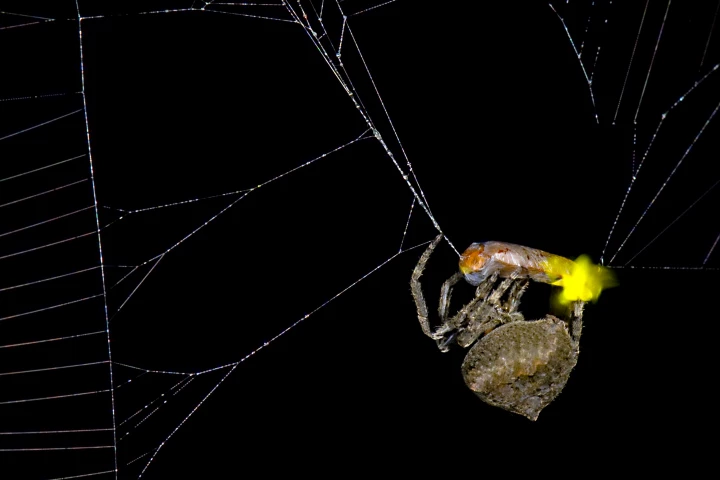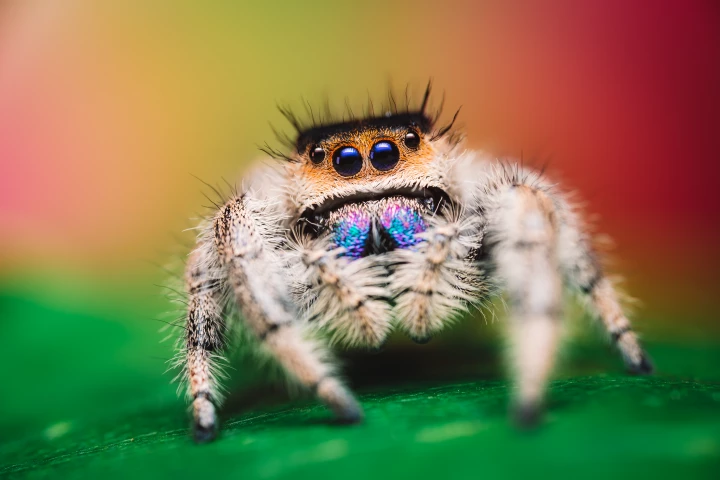Spiders
-
Researchers have genetically modified spiders for the first time using the CRISPR gene-editing process. Adding a single gene to unfertilized eggs resulted in the creation of a spider that could produce red, fluorescent silk.
-
Scientists have discovered how an Australian jumping spider's semi-hydraulics allows it to speed jump long distances with precision while experiencing g-forces higher than those of fighter pilots. Their insights might help robotics research.
-
A new zombie pathogen has been discovered in Ireland. This insidious fungus infects cave spiders and alters their behavior to help spread its spores to new victims.
-
Some species have an incredible knack for hacking others to get what they want. Scientists have now discovered a fascinating new example – some spiders have been seen manipulating fireflies’ flashes to attract more bugs to their webs.
-
Scientists believe lightweight, ultra-strong and flexible spider silk is now one step closer to commercial use thanks to a deceptively complex 'box' that can spin nature's wonder fiber in a "spontaneous, extremely rapid, and highly reproducible" way.
-
Spider silk is known to be one of nature's strongest and toughest materials. If everything works out, an alfalfa-produced synthetic version of the stuff will be used in the construction of the Velozzi Hypercar … only 100 of which will be made.
-
The first drug to prevent heart attack and stroke cell damage is now one step closer to reality, after the K’gari funnel-web spider venom molecule Hi1a got a green light from independent safety studies, and more is learnt about its unique efficacy.
-
Age-related macular degeneration is a debilitating eyesight loss, that robs nearly 20 million Americans of their independence. What if understanding this incurable condition and creating better therapies for it starts in the eyes of jumping spiders?
-
According to Japanese robotics firm TMSUK, there's currently a shortage of sewer-inspection workers in that country. The company has therefore set out to streamline the workload for existing workers, by making a sewage-pipe-inspecting robotic spider.
-
As one of the strongest materials known to science, spider silk regularly finds itself at the center of exciting engineering breakthroughs, but a new study involving a quick chemical bath could see silkworm silk outperform it.
-
While we've seen a number of robotic grippers inspired by various animals, US scientists have now taken a much more "direct" approach. They've devised a method of using actual dead spiders to delicately grasp small objects.
-
Last year, we heard how anole lizards are able to breathe underwater from an air bubble on their nose. One of the scientists involved in that study has now documented a spider doing something similar – although the bubble covers its whole body.
Load More











